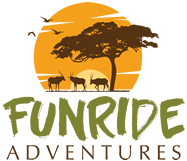Mabamba bay swamp is located west of Entebbe peninsular on the northern shores of Lake Victoria, it’s a Ramsar site and Important Bird Area (IBA). Mabamba stretches through a long papyrus filled channel on the outer showers of Lake Victoria in Entebbe Uganda. The name Mabamba comes from the plentiful lung fish locally known as Mamba. It’s a prime wetland birding site famous for the shoebill which is Uganda’s most lovely bird and nature lovers.
Bird Species in Mabamba Sanctuary
While in Mabamba, you can get a chance of spotting over 300 bird species and some of these include; African Fish Eagle, Purple Swamphe, African Green Pigeon, African Jacana, African Marsh Harrier, African Pigmy Goose, Black Crake, Black Heron, Black-crowned Night Heron, Black-crowned Waxbill, Black-headed Heron, Black-winged Stilt, Blue Swallow, Blue-cheeked Bee-eater, Cattle Egret, Common Moorhen, Common Sandpiper, Common Sqacco Heron, Double Toothed Barbet, Glossy Ibis, Goliath Heron, Great Cormorant, Great White Egret, Great White Pelican, Green Cuckoo, Grey Heron, Grey-crowned Crane, Gull-billed Tern, Hadada Ibis, Harmerkop, Little Egret, Little Stilt, Long-tailed Cormorant, Long-toed Lapwing, Malachite Kingfisher, Marsh Harrier, Northern Brown-throated Weather, Orange Weaver, Papyrus Gonolek, Pied Kingfisher, Pied Wagtail, Pink-backed Pelican, Pin-tailed Whyda, Purple Heron, Red-eyed Dove, Red-headed Love-bird, Shining Blue Kingfisher, Speckled Mousebird, Spur-winged Goose, Spur-winged Lapwing, Swamp Flycatcher, Veilots’ Black Weaver, Village Weaver, Water Thicknee, White-browed Cuckoo, White-faced Whistling Duck, White-throated Bee-eater, White-winged Tern, Winding Cistocola, Wood Sandpiper, Woodland Kingfisher, Yellow-billed Kite, Black-headed Weaver, Yellow-billed Duck to mention but a few.
The birds mentioned can also be found in other places like Murchison Falls National Park, Bigodi wetland, Kidepo Valley National Park, and many others.
How to access Mabamba wetland Sanctuary
Mabamba swamp can be accessed by various routes. One can access the wetland via Nakiwogo landing site from Entebbe or Kampala using a ferry which takes 10 minutes to Kasanje landing site. When you reach Kansanje, drive 20 minutes to Mabamba wetland a home of beautiful birds.
Birding in Mabamba swamp is done from a motorized wooden boat by riding through trails cutting through the thick marshes.
Best time to visit Mabamba wetland Sanctuary
Mabamba wetland sanctuary can be visited throughout the year but mostly enjoyable in the dry seasons of June, July then December to February as water levels are low and it gives much better feeding places and the grass is short. Its also better to visit Mabamba very early in the morning at 7:00 am when the shoebill stock and other birds are looking for food (fish)
Activities to do in Mabamba wetland Sanctuary
Shoebill tracking
Shoebill also known as the whale head-stork is a very large stork like bird. It derives its name from shoe shaped bill. The adult is mainly grey and the Juveniles are browner. In Uganda its found in the large swamp of Mabamba wetland therefore visitors come from all over the world to trek this shoebill stock making shoebill tracking the most popular activity to do in Mabamba wetland.
Butterfly watching
Mabamba wetland is a home of 200 butterfly species which attract a lot of tourists because of their beauty. Some of the butterflies spotted in the wetland include; Achaea aurivilli, Acraea consanguine, Abisaraaneavei, Acraea aganice, Bicylus sebetus among others.
Spot fishing
The wetland is a popular sight to see various fish species. It’s a home to different fish species like Lung fish, tilapia, mud fish and Nile perch. You can also get to know different fishing styles with the help of fishermen found at Mabamba wetland.
Accommodation in Mabamba wetland Sanctuary
Nkima forest lodge
Nkima lodge has four double (or twin) ensuite rooms and two family cottages (with two separate rooms and a shared bathroom). The rooms are situated separately with their own private deck in the forest and are designed to enable views into the canopy, and to maximise natural lighting.
Hot water is provided by solar heaters and there are solar powered lights and charging sockets for phones/laptops, etc. The lodge is fully off grid with a reliable solar power system and water supplied from its own bore hole, which has been tested and is good for drinking.
with all your birding safari kindly contact Funride Adventures.



Comment (0)